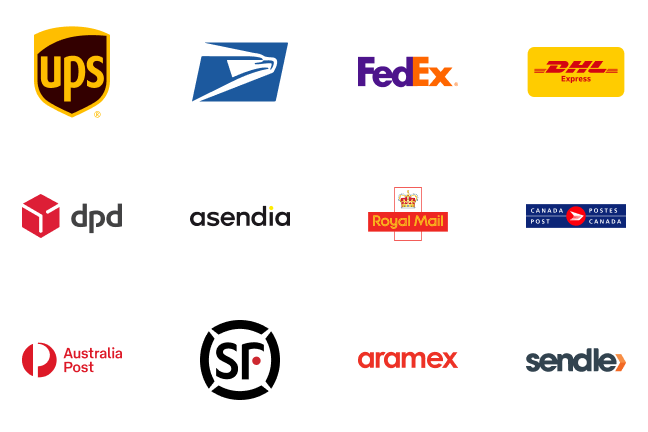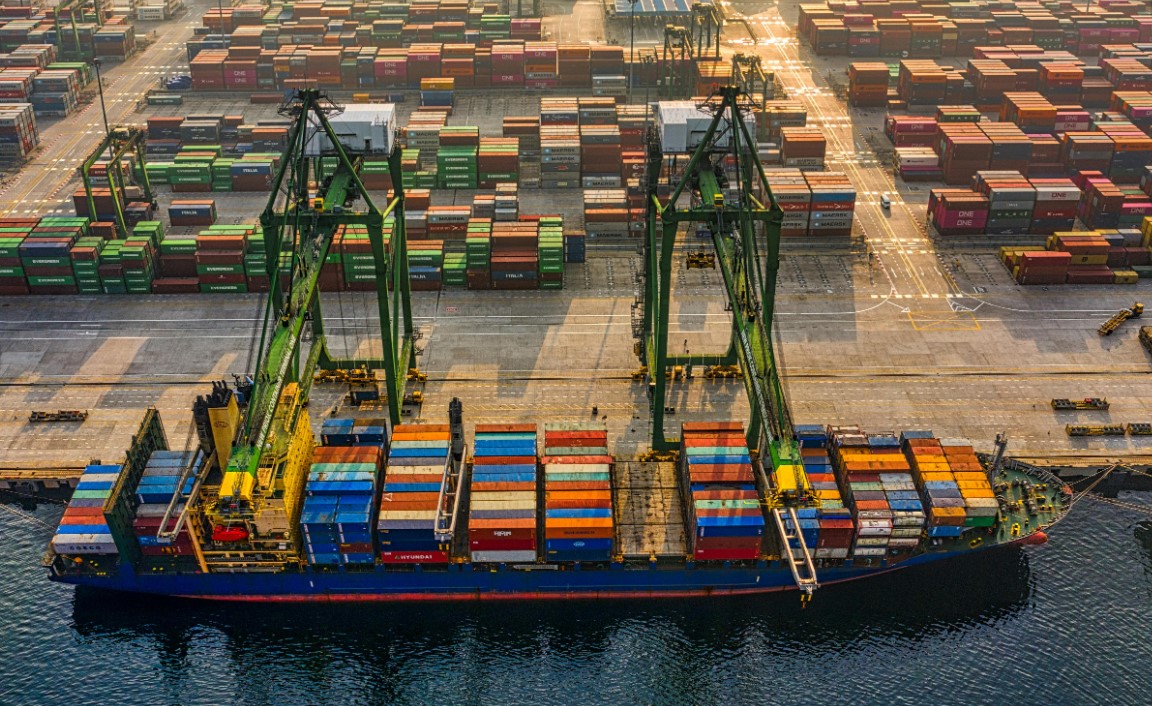Tariffs are reshaping how Malaysia trades with the world, especially the United States. In August 2025, a new set of reciprocal tariffs changed the rules for many industries. For eCommerce sellers, logistics providers, and shipping managers, these changes could impact costs, supply chains, and profitability.
This guide explains what the Malaysia tariffs mean, who they affect, and how businesses can adapt to protect margins and maintain competitiveness in a fast-changing trade environment.
What Are Malaysia Tariffs? A Quick Overview
Tariffs are taxes, often expressed as an ad valorem percentage, applied to imports when they enter a country. These applicable duties are paid before the goods are cleared for consumption in the importing market. They can raise the price of goods, protect local industries, or balance trade between trading partners.
Malaysia has historically maintained a mix of low and moderate tariff rates on most articles to keep its export-driven economy competitive. However, the current deal with the US changes the applicable duty structure for many sectors.
Current situation (August 2025):
- US tariffs on Malaysian goods are now 19% ad valorem, down from an earlier proposal of 25% announced in the Federal Register.
- Key exemptions currently include final products in the semiconductor and pharmaceutical sectors, but these are under review for possible removal on national security grounds.
- Malaysia remains one of America’s major trading partners, shipping US$47 billion worth of goods to the US in 2024, with electronics, furniture, and commodities like palm oil among the top exports.
Industries with highest exposure:
| Sector |
2024 US Export Value |
Tariff Impact Risk |
| Electronics (incl. semiconductors) |
$141.8B* global value, large US share |
Medium (temporary exemption) |
| Furniture |
$1.2B |
High |
| Rubber products |
N/A |
High |
| Palm oil |
11% of US imports |
Pending zero-tariff request |
*Source: Malaysia Semiconductor Industry Association
Trump’s “Reciprocal Tariffs”: What’s New in 2025?
In 2025, President Trump issued an executive order implementing new measures under subchapter III of US trade law, applying reciprocal tariffs to multiple trading partners. These were intended to create a more balanced commerce environment by matching the tariff rate that each country applies to US goods.
Key changes for Malaysia:
- Tariff rate: Reduced from 25% to 19% after rapid negotiations in the final mode of talks.
- Commitments made by Malaysia:
- US$150 billion in purchases of US equipment and final products over five years.
- US$70 billion in cross-border investments in the US.
- Malaysia agreed to remove tariffs on over 98% of US goods subject to import.
Timeline:
| Date |
Event |
| July 31, 2025 |
US announces new tariff rates for 67 nations in Federal Register |
| Aug 5, 2025 |
Malaysia confirms $150B purchase agreement |
| Aug 7, 2025 |
New 19% tariff on Malaysian goods takes effect |
How Are Malaysia Tariffs Impacting Businesses?
For many Malaysian exporters, the tariffs mean applicable duties that make their goods more expensive in the US market. These added costs can reduce competitiveness and lead to fewer shipments.
Main effects:
- Cost pressures: US buyers may ask Malaysian exporters to absorb tariff costs, risking profit margins and production plans.
- Competitiveness loss: Higher landed prices make it harder to compete with final products from other nations.
- Export slowdown: Orders may be delayed or withdrawn if buyers cannot pass on costs to consumers.
Industries most affected:
- Furniture
- Rubber products
- Optical goods
Impact on supply chains:
- Longer lead times from additional customs checks and border protection inspections.
- More documentation and compliance requirements to avoid penalties.
- Higher freight rates as carriers adjust to demand shifts and potential warehouse congestion.
Easyship advantage:
With Easyship’s platform, companies can:
- Compare rates with and without tariffs.
- Determine the most efficient carriers and final mode of transport.
- Calculate applicable duties and taxes instantly.
- Switch to a US-based fulfillment center.
Case Study – The Shipping & Maritime Sector Under Pressure
Malaysia’s ports are central to its trade flows. Tariffs affect everything from goods loaded onto ships to final products reaching buyers.
Current challenges:
- Goods loaded at ports may face delays due to inspection queues and blocked cargo awaiting classification.
- Cashflow impacts when exporters wait longer to be paid after goods clear customs.
- Freight rate swings caused by circumstances like transit rerouting or changes in origin verification rules.
Bright spots:
- If Malaysia secures a zero-tariff arrangement for palm oil, it could replace lost market share in other areas.
- Government measures include targeted incentives for certain sectors.
Easyship case example:
Satisfye, a gaming accessories brand, used Easyship to transform its global fulfillment strategy. With Easyship’s support and strategic tools, they slashed warehouse and fulfillment costs by US$60,000, scaled to over 60,000 orders across 80+ countries, and grew annual order volume by 35%.
Navigating the Tariff Maze: What Can Exporters and Importers Do?
All is not lost for business owners struggling to comb through the maze of new regulations . Listed below are some logical steps that businesses can take to reduce the confusion.
Practical steps for businesses:
- Renegotiate contracts to share tariff costs with buyers.
- Use an automatic tax and duties calculator.
- Diversify markets to reduce reliance on a single trading partner.
- Identify goods that may evade applicable duties through exemptions or classification changes.
- Keep detailed logs of all shipments, HS codes, and loading dates to avoid mistakes.
- Use automation to ensure compliance with customs and border protection rules.
Government support:
- Trade missions to new markets.
- SME aid packages to offset applicable duties.
- Requests for exemptions under Annex II of trade agreements.
The Road Ahead: Are Tariffs Here to Stay?
The durability of the Malaysia tariffs depends on US political outcomes, ongoing negotiations, and global trade patterns.
Possible scenarios:
- Tariffs replaced with sector-specific quotas.
- New exemptions for certain articles based on national security reviews.
- Expanded investments to create goodwill between trading partners.
Opportunities:
- Enter new markets within ASEAN, Middle East, or Africa.
- Leverage technology to improve cost control and respond faster to administration changes.
- Use platforms like Easyship to remain consistent and competitive in final mode deliveries.
Understanding How Tariffs Are Calculated and Applied
When we talk about Malaysia tariffs, it’s important to know how they’re actually calculated. This helps businesses plan and avoid surprises when goods arrive at the port.
How tariffs are set:
- Tariffs can be a fixed dollar amount per unit or an ad valorem equivalent — meaning a percentage of the product’s value.
- In the US, most Malaysia tariffs are ad valorem and calculated under subchapter III of trade law.
- These rates are formally announced in the Federal Register before they take effect, giving companies a short time to prepare.
What determines the applicable duties:
- The product’s origin (where it was made and loaded) is a major factor.
- The classification of the product in official customs codes.
- Whether the product qualifies for exemptions listed in Annex II of the trade agreement.
How border protection agencies check compliance:
- They review shipping documents, warehouse receipts, and loading logs.
- They confirm that goods match the description and country of origin.
- If information is missing or wrong, goods can be blocked, withdrawn from entry, or face penalties.
Why this matters for exporters:
- Misclassifying goods or failing to file accurate paperwork can be an expensive mistake.
- A delay at the border doesn’t just affect one order — it can disrupt entire shipments and slow down production schedules.
By knowing how the applicable duties are calculated and making sure all documents are complete, businesses can reduce the risk of delays and unexpected costs.
The Way Forward for Malaysian Exporters
In a changing trade environment, staying aware is the most important thing. The deal with the US has reshaped the applicable duties and trading conditions for many industries, and businesses must adapt by diversifying, streamlining compliance, and using technology. With the right tools, determination, and a solid plan, businesses can easily navigate these obstacles while staying profitable.
Ready to simplify and save on shipping?
Easyship is here to help.
Easyship helps eCommerce sellers stay profitable in a changing trade environment. With reciprocal tariffs, customs duties, and new rules for cross-border orders, our free shipping tools and smart dashboard are built to help you ship smarter and sell globally—without the stress.
FAQs on Malaysia Tariffs
What is the current Malaysia tariff rate for exports to the US?
The current tariff rate is 19% ad valorem for most Malaysian goods, reduced from an earlier proposed rate of 25%.
Which Malaysian industries are most affected by the US tariffs?
Furniture, rubber products, and optical goods are most impacted, while semiconductors and pharmaceuticals have temporary exemptions under review.
How do Malaysia tariffs affect eCommerce businesses?
They increase applicable duties, shipping costs, and compliance requirements, making competitive pricing harder for Malaysian exporters.
Can Malaysian exporters avoid or reduce applicable duties?
Yes, by focusing on tariff-exempt goods, diversifying markets, using trade agreement provisions, and leveraging shipping platforms like Easyship for compliance.
How are Malaysia tariffs calculated?
Most are ad valorem, based on product value, origin, and classification, as detailed in the Federal Register under subchapter III of US trade law.















































.svg)
.svg)






.avif)
.avif)

.avif)
.avif)


.avif)


.avif)










.avif)
.avif)



.avif)
.avif)


.avif)
.avif)


.avif)











.svg)








